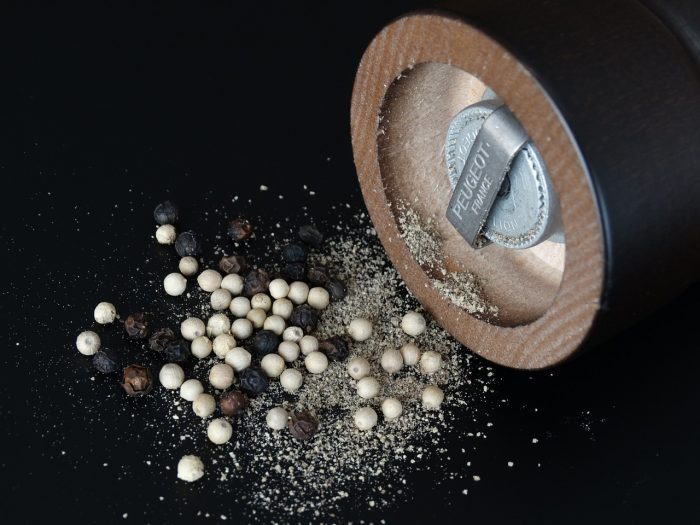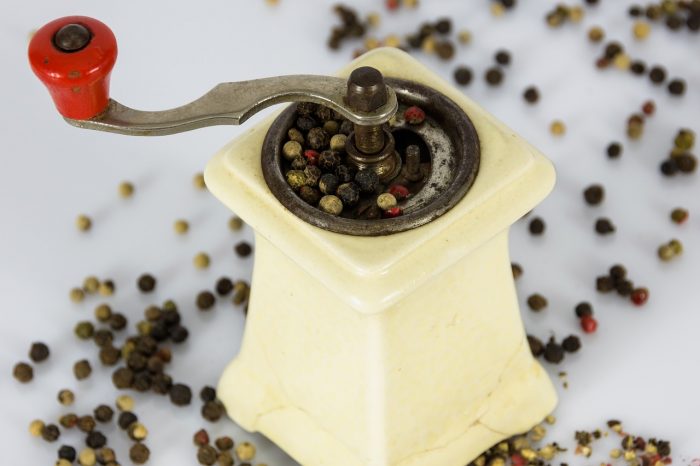Chefs from around the world’s best kitchens always advise using freshly milled spices for the sole reason of their remarkable flavors and rich oils that add an eccentric aroma to the dish.

All thanks to the evolution that we no longer need a mortar and a pestle to crush our fresh spices, the modern pepper mills that do the work without much force and effort.
Here’s a comprehensive guide that illustrates the nuts and bolts of the wooden pepper mills.
Qualities to look for in a pepper mill
For a novice, the very first model of a pepper mill might be impressive enough to pay for it. However, a true culinary lover knows the worth of dealing with the inner peculiarities of the mill, namely, shaft structure, driver plates, grinder housing, grinding shaft retainer, coarseness settings, and the grip of its knob.
Before finalizing the mill, evaluate the quantity of the pepper that you will be grinding daily. Is it for a family or a catering service?
Contemplate the design in advance so that it matches with the kitchen armamentarium and its outlook. Also, find a mill whose working mechanism aligns with your cooking skills.
Shopping tips for a pepper mill

The procurement of kitchen tools is an art involving multiple nuances and the specific ethics of a chef. Here is a list of a few tips to help you purchase an efficient pepper mill.
- Material of the mill: Craftsmanship has given us the best kind of kitchen equipment; pepper mills are no exception. The wooden pepper mill is relatively the best choice because of its incredible design that satisfies the appetite of a culinary lover. These are durable, rust-resistant, and fracture-proof. Metal mills are a bit heavy, and plastic is strictly not advised for kitchen products.
- Ease of use: Grip and twist are two determining factors to assess the practicality of a kitchen tool. Easily twistable knobs increase the speed of use and also comply with chefs who suffer from wrist disorders such as carpal tunnel syndrome.
- Grinding machinery: Traditional grinding systems are equipped with shafts, whereas the standard systems are shaftless, eliminating any kind of mess on the kitchen top. The stainless steel or ceramic models are preferred over acrylic ones because of their durability, shine, and cleansable features.
- Coarseness settings: Roast beef requires half-cracked black pepper, whereas ground white pepper is used for the preparation of sauces. This clearly emphasizes the importance of the grossness of the pepper required for the standard taste of different dishes. Always check for the variety of coarseness settings in a pepper mill. Those that come with gradings are easier to manipulate.
- Style: Although a personal choice, classic pieces are always attractive. Pepper mills with unique designs and a tint of modernity embellish the contemporary vibe of the kitchen.
- Hand-operated or Electric: Manual mills are favored for their authenticity but avoided in cases of chefs with medical issues or large quantities of pepper; in such scenarios, battery-powered mills are preferred.










